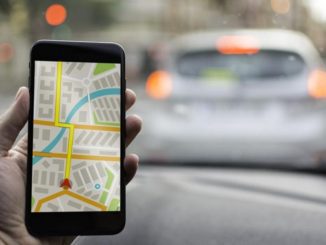The latest (4th) generation TomTom One is remarkably similar to the TomTom XL (2nd generation), the only real difference being price and screen size. This means that it looks good! Smooth flowing lines and minimilist packaging with inbuilt manual in the flash drive thus doing its bit for the earth.

When we asked people to describe the ‘One’ they invariably came up with smooth, slim, sexy, neat and this pretty much sums it up. At just 92mm wide, 78mm tall and 25mm deep, the fourth-gen One is quite a bit narrower and a bit shorter than the XL. That’s because the One has a 3.5-inch touchscreen, whereas the otherwise identically specced XL has a 4.3-inch screen. The graphics and interface which are exceptionally easy to use remain.
Its as simple as c licking on the map which brings up the main menu screen, from where you set a destination or change your settings. Clicking the box on the left, which contains the next turn instructions, allows you to hear a repeat of the previous verbal instruction or change the XL’s volume. While pushing the info box on the right will call up a route summary.
In the past the mounting of TomTom units was a bit suspect with the units detaching themselves, with a crash, a bang and a wallop, at the merest thought of a pothole or speed hump, which are prevelant around the suburbs. However the new compact, detachable windshield mount features a suction cup with a nifty and effective ring-type locking device which proved more effective.
Turn the One over and you get a large silvery speaker grille, with a larger, louder speaker underneath. The speaker bevel also doubles as a ring around which the aforementioned windshield mount rotates. Detach the TomTom from your windscreen and the whole package folds up into a very compact package, allowing for easy stowage in even the tiniest car’s glovebox. Our one criticism of the new design is the recessed mini-USB socket which, for this technologically challenged four thumbed individual peoved to be a source of frustration when we attempted to connect the in-car charger.
Cause to rejoice is the fact that text-to-speech, is now standard on the One, as well as the larger-screen XL. Text-to-speech is a really cool function that allows the device to read out street names as part of its verbal instructions, transforming “turn right in 500 metres” into “turn right in 500 metres onto Pitt Street”. Occasionally the Australian-centric names and pronunciation cause it to pause and think though.
Another pleasing feature is that the TomTom successfully avoids the old “reading the road number instead of the road name” trap, where say, “54” is substituted for Enmore Road and “X4” for Parramatta Road. Given that it reduces our inclination to glance at the screen while driving, it is surprising that Samantha, (or she who must be obeyed!!!) the only included voice capable of text-to-speech, isn’t selected by default.
One frustrating feature with a lot of GPS is the inaccuracy of some of the maps. This however is not a problem with Map Share which is the other stand-out feature on the XL’s spec sheet – and one that’s yet to be copied by its competitors. This allows users to make map corrections on their device, such as blocking or unblocking streets, renaming roads, changing turn restrictions and traffic flow, amongst others. These corrections can then also be shared with other TomTom users via the TomTom Home software package, which works on either PC or Mac.
It should be noted though that corrections will only be shared after being passed by TomTom’s expert team of verifiers. Turn around time is claimed to be one or two weeks, although we cant comment on this either way. Unfortunately neither the GPS nor the Home software allows you to keep track of how your shared changes are progressing through TomTom’s verification process. The Home software is, like One itself, simple to use, and allows you to download additional content – some free, some not so free – like overseas maps and celebrity voices, if that’s your type of thing.
Content comes from either TomTom, third parties or the user community. Being the entry-level widescreen model, the One misses out on features like Bluetooth hands-free, MP3 playback and FM transmission.
Just like the device’s interface, the One’s routing algorithms seem to have escaped tweaking from the programming team. Meaning that the predeliction to stick to main roads seems as prevalent as ever; venture onto a side street and the One will make quite a few attempts to guide you back onto a main street before taking the hint that you want to take a back road. This can be frustrating to say the least.
While inefficient during peak hour and on choked inner city roads, some may prefer this solution because if you’re going to a new part of town it’s easier on the ol’ grey matter to stay on main roads which are better signposted. I guess that is the reason we have GPS in the first place, to take you easily to places where you dont know how to get there. Like a lot of technology these days the performance is variable when surrounded by tall buildings in the CBD, as satellite signals are obscured or bounced off buildings.
Fixed red-light and speed camera locations come preloaded on the XL, however, a few of them are misplaced on freeway slip roads or tunnel entrances – at least in New South Wales. Also standard is the 2008 version of Telstra’s Whereis maps. A word of warning: TomTom’s “latest map guarantee” is only valid for 30 days after the purchase of your One. So bear this in mind if you’re thinking of purchasing a One towards the middle of 2009.
Overall we really liked the TomTom One, its easy to use, has a large enough screen, looks great and the few bugbears are well overshadowed by its useability and features. If you are looking for a portable GPS you could do a lot worse than look at the TomTom One and at $349 it represents reasonable value


